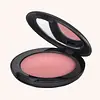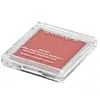ISADORA Perfect Blush Versus Apolosophy Blush
What's inside
What's inside
 Key Ingredients
Key Ingredients

 Benefits
Benefits

No benefits
 Concerns
Concerns

 Ingredients Side-by-side
Ingredients Side-by-side

Talc
AbrasiveMica
Cosmetic ColorantOctyldodecyl Stearoyl Stearate
EmollientDimethiconol Stearate
EmollientDimethicone
EmollientMagnesium Myristate
Trimethylsiloxysilicate
EmollientDiisostearyl Malate
EmollientCaprylyl Glycol
EmollientPhenoxyethanol
PreservativeHexylene Glycol
EmulsifyingTin Oxide
AbrasiveCaprylic/Capric Triglyceride
MaskingAluminum Hydroxide
EmollientCI 77891
Cosmetic ColorantCI 77491
Cosmetic ColorantCI 77492
Cosmetic ColorantCI 77499
Cosmetic ColorantCI 15850
Cosmetic ColorantCI 19140
Cosmetic ColorantCI 77007
Cosmetic ColorantCI 75470
Cosmetic ColorantCI 45410
Cosmetic ColorantCI 42090
Cosmetic ColorantTalc, Mica, Octyldodecyl Stearoyl Stearate, Dimethiconol Stearate, Dimethicone, Magnesium Myristate, Trimethylsiloxysilicate, Diisostearyl Malate, Caprylyl Glycol, Phenoxyethanol, Hexylene Glycol, Tin Oxide, Caprylic/Capric Triglyceride, Aluminum Hydroxide, CI 77891, CI 77491, CI 77492, CI 77499, CI 15850, CI 19140, CI 77007, CI 75470, CI 45410, CI 42090
Talc
AbrasiveSilica
AbrasiveOctyldodecyl Stearoyl Stearate
EmollientPolymethyl Methacrylate
Mica
Cosmetic ColorantIsononyl Isononanoate
EmollientIsostearyl Neopentanoate
EmollientZea Mays Starch
AbsorbentMagnesium Myristate
Zinc Stearate
Cosmetic ColorantEthylhexylglycerin
Skin ConditioningDehydroacetic Acid
PreservativeStearic Acid
CleansingPalmitic Acid
EmollientLauric Acid
CleansingCI 77891
Cosmetic ColorantCI 77492
Cosmetic ColorantCI 77499
Cosmetic ColorantCI 15850
Cosmetic ColorantCI 77007
Cosmetic ColorantCI 19140
Cosmetic ColorantTalc, Silica, Octyldodecyl Stearoyl Stearate, Polymethyl Methacrylate, Mica, Isononyl Isononanoate, Isostearyl Neopentanoate, Zea Mays Starch, Magnesium Myristate, Zinc Stearate, Ethylhexylglycerin, Dehydroacetic Acid, Stearic Acid, Palmitic Acid, Lauric Acid, CI 77891, CI 77492, CI 77499, CI 15850, CI 77007, CI 19140
Ingredients Explained
These ingredients are found in both products.
Ingredients higher up in an ingredient list are typically present in a larger amount.
Ci 15850 is the pigment color red. It is an azo dye and created synthetically.
Azo dyes need to be thoroughly purified before use. This allows them to be more stable and longer-lasting.
This ingredient is common in foundations, lipsticks, and blushes. This color is described as brown/orangey red.
It has many secondary names such as Red 6 and Red 7. According to a manufacturer, Red 6 usually contains aluminum.
Learn more about CI 15850CI 19140 is also known as Tartrazine. Tartrazine is a synthetic dye used in cosmetics, foods, and medicine to add a yellow color.
Tartrazine is created from petroleum and is water-soluble.
Some people may experience allergies from this dye, especially asthmatics and those with an aspirin intolerance.
Learn more about CI 19140This pigment is called Ultramarine blue lazurite. It gives a saturated blue color, but can be used to create other colors as well.
According to the manufacturer, it is usually made from kaolin, sodium sulfate, sodium carbonate, sulfur, and charcoal.
Ci 77492 is also hydrated iron III oxide. It's sole purpose is to give a yellow hue to products.
Iron III oxides are classified as inorganic chemicals for coloring.
Synthetically created Ci 77492 is considered safer than those naturally found. This is because the synthetically created version may contain less impurities. Iron oxides are generally non-toxic and non-allergenic.
Learn more about CI 77492Ci 77499 is also hydrated iron III oxide. It is created from mixing red and black iron oxides. This helps give shades of darkness to a product.
Iron III oxides are classified as inorganic chemicals for coloring.
Ci 77891 is a white pigment from Titanium dioxide. It is naturally found in minerals such as rutile and ilmenite.
It's main function is to add a white color to cosmetics. It can also be mixed with other colors to create different shades.
Ci 77891 is commonly found in sunscreens due to its ability to block UV rays.
Learn more about CI 77891We don't have a description for Magnesium Myristate yet.
Mica is a naturally occurring mineral used to add shimmer and color in cosmetics. It can also help improve the texture of a product or give it an opaque, white/silver color.
Serecite is the name for very fine but ragged grains of mica.
This ingredient is often coated with metal oxides like titanium dioxide. Trace amounts of heavy metals may be found in mica, but these metals are not harmful in our personal products.
Mica has been used since prehistoric times throughout the world. Ancient Egyptian, Indian, Greek, Roman, Aztec, and Chinese civilizations have used mica.
Learn more about MicaOctyldodecyl Stearoyl Stearate is created from stearic acid.
It is an emollient and thickens the lipid (oil) portion of a product. Due to its emollient properties, it may not be fungal-acne safe.
Talc is a clay mineral. It helps absorb moisture and improve the texture of products. Like other types of clay, Talc can have a slight exfoliating effect on skin. Talc can be added to increase the volume of products.
Some Baby powders are made by combining talc with corn starch. The word "talc" comes from Latin and originates from Arabic. Talc is a mineral commonly found throughout the world.
If you have any concerns about using talc, we recommend checking out the FDA's official page.
Learn more about Talc